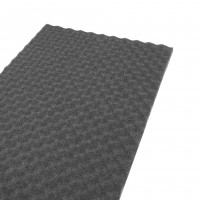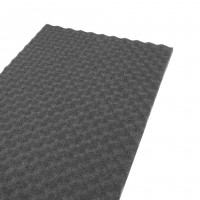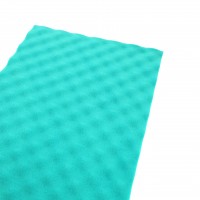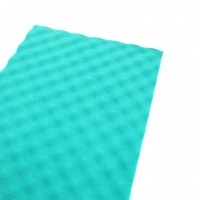Nakamichi NSE-1318 speakers
More about the product
- Use our consulting room
- You can return the goods to us within 14 days
- Try the product at our store
Nakamichi NSE-1318 speakers
The Nakamichi NSE line of coaxial speakers features an injection-molded polypropylene diaphragm that is both very light and stiff. Thanks to the wider membrane surface, deeper and clearer bass is achieved. The tweeter allows for better high-frequency response and improves vocals. The PEI shell, also known as polyetherimide, is lightweight, heat-resistant and retains its shape even after prolonged use, enabling accurate sound reproduction in all situations. The improved crossover is hidden inside the speaker for a cleaner look and easier installation. The foam suspension is treated to maintain a consistent level of sound reproduction over long periods of time in your vehicle.Key Features of Nakamichi NSE-1318 Speakers
- 2-band design.
- Foam curtain.
- Low mounting depth of 40.6 mm.
- Maximum power up to 150 W!
- Sensitivity 87 dB.
- PEI heights.
- Cover grids are included in the package.
About the Nakamichi brand
The history of the Nakamichi brand dates back to 1948, when it was founded in Japan by Etsuro Nakamichi. The journey to fulfilling his dreams began with the establishment of a small research institute, Nakamichi Research Corporation, in Tokyo, Japan, providing sonar and magnet research and development for major brands, government entities, universities and organizations. Since then, it has established itself as a trusted creator of high-quality products that are the result of intensive scientific work, a passion for sound and a commitment to uncompromising quality and performance. In 1972, Takeshi Nakamichi joined Nakamichi Corporation, who was associated with the company's boom at the time and was deeply involved in all of Nakamichi's legendary audio products sold in Asia, America and Europe, including the first launch of the Nakamichi 1000, the world's first cassette tape recorder. He was regarded as one of the world's best acoustic and sound engineers, who was able to combine high-end sound with the genius audio product design strengths of Mr. Koza Kobayashi, the brand's chief engineer at the time. Amplifiers, players, and even car radios of that time are now among the legends for their unsurpassed quality. However, the Nakamichi brand is still successful today and produces high-quality products not only in the field of home audio, but also in vehicles. The ingeniously thought-out portfolio of the manufacturer is constantly growing, and practically all products stand out for their high-quality sound and incredible processing in the given price category. The legacy of Etsuro Nakamichi lives on and we are glad that it is not only a sound name, but also reflected in the quality of Nakamichi products.
| Catalog number | NSE-1318 |
| Brand | Nakamichi |
| Links | Official web presentation |
| Speaker typeCoaxial speakers: Coaxial speakers are characterized by a so-called all-in-one design. The tweeter and mid-bass speaker are in one basket. The advantage is simpler assembly, but thanks to the connection or proximity of the bands in one speaker, the sound quality will usually be reduced. As a rule, in the middle of the mid-bass speaker, there is a tweeter whose voice coil works in the second air gap of the common magnetic circuit. The three-way coaxial speaker consists of a mid-bass speaker, a center speaker and a separate tweeter in the front on a special beam. Component Speakers: Component speakers are characterized by a division into individual frequency bands, treble + mid-bass + or. bass band. The individual speakers can be placed completely separately, which results in a better sound and acoustic performance. In the vast majority of cases of component speakers, an external crossover is also supplied, which divides the treble, middle / mid-bass, and into the three-band the bass band or allows setting the decibel level of the tweeter (e.g. +2 dB, 0 dB, -2 dB), steepness (e.g. 6dB/Oct. 12dB/Oct.) or active or bi-amp connection. | Koaxiální 2 pásmové |
| RMS powerRMS speaker power is the constant power of the entire system, not just one speaker or one side. This is also the performance of continuous use of the speakers. If the RMS power is exceeded for a long time, the speakers may be irreversibly damaged! | 25 W |
| Max. (maximum performancePeak performance , which the speaker can play for a moment (approx. 0.5 s), for example when hitting drums in a song. If the max power is exceeded, the speakers will usually be damaged! | 150 W |
| ImpedanceImpedance - measurement of electrical resistance. When buying speakers, it is important to make sure that the impedance matches the amplifier or car stereo you are using. Example: A 2 Ohm speaker cannot be connected to an amplifier that is only stable up to 4 Ohms! A 4 Ohm speaker can easily be used with an amplifier that is stable up to 2 Ohms. The most common speaker impedance today is 3 - 4 Ohm. | 4 Ω |
| Frequency rangeThe ability of the speakers to play a signal from the lowest frequency to the highest, or the speaker's ability to faithfully reproduce sound in a specific frequency band. Professionally: In the frequency range from 40 to 16,000 Hz, the vast majority of fundamental and overtones (harmonics) of all musical instruments are found. We are interested in the course of the radiated sound pressure in this range of frequencies when the loudspeaker system is supplied with constant power. We call this course the frequency characteristic, which tells us the level of radiated sound pressure in decibels (dB) depending on the frequency. The frequency characteristic of a speaker or speaker system can be expressed most succinctly with a graph. Mostly, however, the frequency characteristic is indicated by indicating the maximum tolerance of the sound pressure in the given frequency range, e.g. 50 to 15,000 Hz -+ 6 dB. Since the frequency characteristics of loudspeakers and systems in general are quite uneven, some manufacturers do not even specify this maximum tolerance of sound pressure in decibels in their catalogs for reasons of prestige. Data impoverished in this way is unfortunately worthless. What is valid is that the manufacturer offers a speaker system with a frequency range of 30 to 20,000 Hz, if he is worried about stating the maximum unevenness of the sound pressure in this range, because he can have a tolerance of, for example, +- 20 dB. The unevenness or undulation of the frequency curve in good speaker systems for high-quality music performance should not exceed +-3 dB in the 80 to 12,000 Hz band and +-6 dB in the 40 to 16,000 Hz band. Greater unevenness already depletes or emphasizes certain tonal areas, which can cause audible or even disturbing distortion. The proportion between fundamental tones and higher harmonics also changes, thereby changing the color of the sound, and individual musical instruments as well as the entire musical image sound unnatural. | 82 - 19 500 Hz |
| The diameter of the mid-bass speakerWe state the diameter of the speaker as the diameter of the entire speaker, not including the mounts, when smaller speakers (87, 100, 130 mm) have extra mounts. Some speakers are oval and there the dimension is given in inches, always the shortest side to the longest side. One inch is approx. 2.5 cm. | 130 mm |
| Installation depth of the mid-bass speakerThe installation depth of the speaker is measured from the bottom edge of the magnet to the bottom edge of the tin, plastic or cast speaker basket, or speaker bearing surfaces. | 40,6 mm |
| Mid-woofer diaphragm materialThe material that was used for the speaker diaphragm. Don't be afraid of the paper, it surprisingly has a very natural and high-quality sound and, thanks to the surface treatment, it can withstand moisture without any problems. | Kompozitní polypropylen |
| Tweeter dome diameterThe net diameter of the dome (diaphragm) of the tweeter. | 20 mm |
| Tweeter dome materialThe shell material that was used in the manufacture of the tweeter. | PEI |
| Frequency crossover included in the packageThe crossover is an important part of defacto all loudspeakers. A crossover usually contains different resistor values, coil sizes, and capacitor types that fundamentally modify the sound. We describe below what the turnouts are for. Component Speakers: A crossover is part of every quality component speaker system. Its task is to ensure the distribution of frequencies that the amplifier produces in the entire acoustic spectrum of frequencies so that each of the speakers receives only that part of the band that it can optimally play in terms of efficiency and minimal distortion. Coaxial speakers: In most cases, coaxial loudspeakers have a simple crossover (6dB/Oct.) formed by a capacitor at the tweeter. | Ano (kondenzátor) |
| Cover grids included in the packageOriginal cover grilles in speaker packaging. | Ano |
| Price forIf the price is for a pair, the package always includes 2 pieces of everything, e.g. 2x mid-bass, 2x tweeter and 2x crossover. | Pár |




